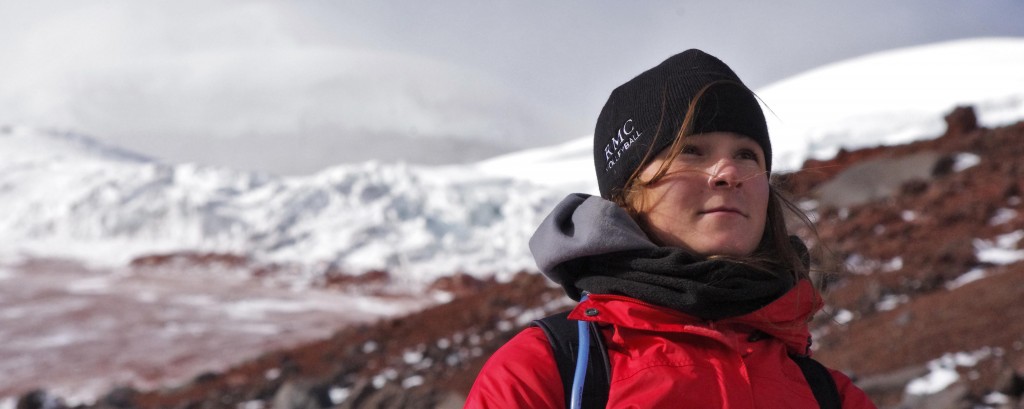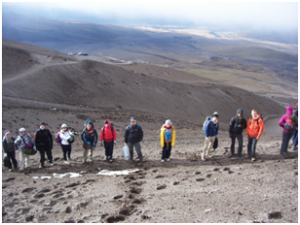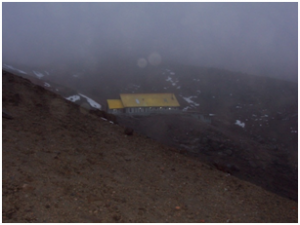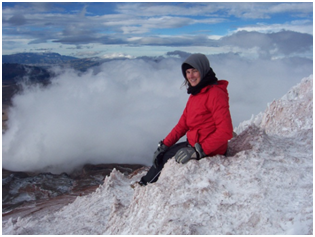
2012 Amazon Expedition Dispatch: Journées 9 et 10
par 25842 OCdt (IV) Constance-Aurélie Ratelle
Notre aventure dans la jungle a été assez exceptionnelle, cela va sans dire. Mais ce n’était rien comparé aux paysages, aux activités et à la culture que nous avons pu expérimenter à Baños, une petite ville en plein milieu de la cordillère des Andes.
Jour 9
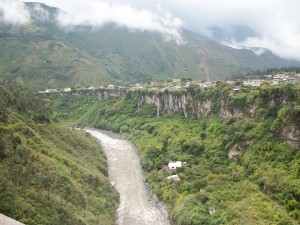 De retour à Misahualli, nous avions une soirée pour préparer nos bagages et dormir quelques heures avant de partir pour Baños. Après quelques heures de voyagement en autobus, au travers des Andes (paysage à en couper le souffle, soit dit en passant) nous sommes arrivés au beau milieu d’une vallée, face à un Volcan (toujours en activité), là où était situé Baños. La disposition des campagnes entourant la ville est particulière. Les fermes, les champs et les paturage sont littéralement sur les flancs des montagnes, allant de 2000 mètres à plus de 3000 mètres d’altitude. Ce qui fait qu’un fermier possédant une ferme peut avoir une terre commençant à 1990 mètres et se terminer à 2500 mètres! La ville en elle-même était très petite et charmante. Tous les commerces étaient regroupés autour d’un même bloc.
De retour à Misahualli, nous avions une soirée pour préparer nos bagages et dormir quelques heures avant de partir pour Baños. Après quelques heures de voyagement en autobus, au travers des Andes (paysage à en couper le souffle, soit dit en passant) nous sommes arrivés au beau milieu d’une vallée, face à un Volcan (toujours en activité), là où était situé Baños. La disposition des campagnes entourant la ville est particulière. Les fermes, les champs et les paturage sont littéralement sur les flancs des montagnes, allant de 2000 mètres à plus de 3000 mètres d’altitude. Ce qui fait qu’un fermier possédant une ferme peut avoir une terre commençant à 1990 mètres et se terminer à 2500 mètres! La ville en elle-même était très petite et charmante. Tous les commerces étaient regroupés autour d’un même bloc.
Lors de notre arrivée, notre première activité fut d’aller essayer la tyrolienne. Nous avons fait près d’une heure d’autobus pour monter dans les montagnes et une fois arrivés au sommet, nous avons vu ce que nous avions à traverser : un canyon haut de près de 150 mètres où coulait une large rivière. Nous avions un trajet de 6 descentes à parcourir, parfois seul, parfois en tandem, parfois la tête en bas, parfois en position « superman ». Le paysage était magnifique et l’expérience était géniale.
Le soir nous avons eu droit à quelques représentations de musiciens locaux. Guitare et flûte de pan étaient à l’honneur. Nous avons pu déguster des mets typiques des Andes : cochon d’inde, légumes, riz, pâtes, poulet.
Jour 10
Le lendemain, avant de partir pour le Cotopaxi, une dernière activité nous attendait : le bungee. La ville et la cordillère de Llanganates étaient séparées par un immense canyon (la continuité du canyon précédemment mentionné) et les deux côtés étaient reliés par un pont sur lequel était installée une station de bungee. La plupart d’entre nous étaient stressés à l’idée de sauter dans le vide, mais nous y avons tous passé. Bourrés d’adrénaline, nous sommes partis rapidement pour le volcan Cotopaxi, pour une aventure encore plus décapante.
__________________
Climbing Cotopaxi
By OCdt (IV) Norah Collins
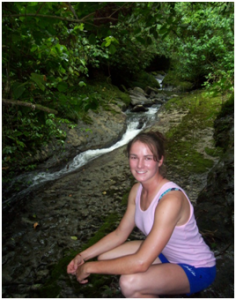 From the depths of the jungle, where we were concerned about the strange plants of the amazon or about where to put our hands, to a snow covered volcano where we were worried about if we packed enough long underwear! It was a long bus ride winding through one lane streets and passing between mountains and volcano’s in order to get to the Cotopaxi Volcano. Cotopaxi is an active volcano that is located south of Quito, the capital of Ecuador, and is the closest point to the sun on Earth. Cotopaxi is also the last stop for the RMC expedition team of 2012.
From the depths of the jungle, where we were concerned about the strange plants of the amazon or about where to put our hands, to a snow covered volcano where we were worried about if we packed enough long underwear! It was a long bus ride winding through one lane streets and passing between mountains and volcano’s in order to get to the Cotopaxi Volcano. Cotopaxi is an active volcano that is located south of Quito, the capital of Ecuador, and is the closest point to the sun on Earth. Cotopaxi is also the last stop for the RMC expedition team of 2012.
My name is Norah Collins and I am a fourth year reservist studying History at the Royal Military College of Canada. I joined the Expedition Club for the adventure, the challenge, but also for the opportunity to take my education abroad. The Cotopaxi climb was definitely a high light of the 2012 Amazon Expedition and an experience I will never forget.
In order to complete the hike our group was given a professional guide, Tony. Tony is a fully qualified climber and had climbed Cotopaxi many times, which was encouraging for our group. As we climbed out of our bus at the bottom of the Cotopaxi volcano, our gaze quickly focuses on our next destination. A small yellow shack, called the refuge, tucked in between two sides of the volcano. As exhilarating as it was to see where we had to climb to before nightfall, there was fluffy white stuff surrounding the refuge that gave you a friendly reminder that it was going to be cold. In a single file 16 RMC students begin hiking up the front of this active volcano in a zigzag fashion. As we climbed the temperature quickly began to drop and the air started to thin. On occasion Tony would stop us, not only to enjoy the breath taking view, but also so that our bodies could adjust to the difference in the altitude and air quality.
As we got closer to the refuge it was easy to see that getting into a warm sheltered area was an exciting and motivating feeling. However, the refuge was literally something to keep the elements off you, which means NO HEAT! Let’s just say it didn’t take long to figure out who didn’t pack for winter. It wasn’t long before we all were setting up our sleeping bags hoping we would be warm enough to get some sleep, in order to be ready for the rest of the climb the next morning. As cold as it was, the view of the city lights of Quito off in the distance and having the moon and stars illuminating everything around you were simply breathtaking. It was definitely a moment when you realize how lucky you are to be doing what you are doing and what you’re about to do!
At 0500 hours the days begins with a simultaneous realization that the alarm chimes are pounding away nearly as much as your head. There were seven of us that were able to get out of bed, force ourselves to get dressed and go outside. It was only another couple hundred meters to the glacier point, but it wasn’t a quick hike. It took approximately two hours to reach the glacier, but climbing a volcano as the sun rises was the most beautiful and relaxing scene that I have ever witnessed. Every new minute brought with it more beautiful sunshine and fewer clouds as they were melted away by the rays of light here on the closest point to the sun, kissing the mountainside, illuminating Ecuador.
In my opinion, sitting at 16400 ft altitude eating a snickers bar and watching the sunrise over Ecuador was the best way to end the 2012 Amazon Expedition.



